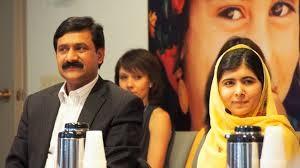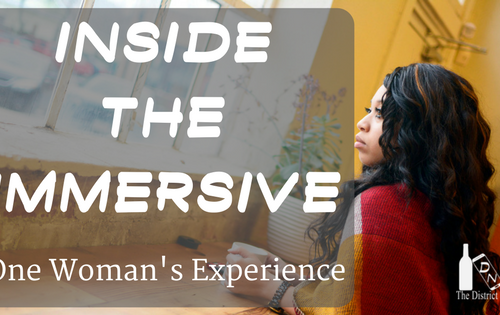As someone who has lived in a Muslim community with a Muslim family I have a unique perspective on the Muslim faith and community. But what story could I say that would move you to a new perspective? None!
My stories are about friendship and family. I have no stories that would change the conversation or add anything substantive on refugees or asylum seekers, but there is one story I know of that could. A story that opened my mind and heart to the refugee and asylum seeker story. “He Named Me Malala,” the documentary about Malala Yousafzai the young girl shot by the Taliban for speaking up for girl’s education. There are three parts to this movie that make it stand out it doesn’t shy away from the hard truths, its use of mediums, and its depiction of Malala.
“He Named Me Malala” doesn’t shy away from the hard truths of Malala’s story. Instead the film, takes a candid but gentle look at the shooting, the bombings, and her sneaking around Swat to attend school. The most disturbing part for me was watching the slow progress by which the Taliban took control of Swat. I was expecting brute strength and intimidation, instead it was done by listening and becoming a part of the community. I could sympathize with the reactions of the family at their disbelief, shock and eventual fear. It, also, provides a clear line connecting Malala’s enthusiasm for education and her current position as an international advocate for education, by documenting her love of education before the Taliban and her desires for more than a traditional village life. But for me the most difficult part was the shooting. As I listened, I realized how much strength it must take to continually re-tell the story of you and your friends being shot by extremists. The films honesty and openness makes it easy to connect with her experience, because this film shows that this isn’t just about her.
Director Davis Guggenheim’s use of animation, interviews, and new footage adds emotion to the telling of Malala’s story. The first images to make an impression was the story of Malala namesake, Malalai of Maiwand, a famous Pushtu poetess and warrior woman from southern Afghanistan. The animation brought the story to life while the darkness of the theater and the rhythmic pace of the story tellers voice reminded me of being read a bedtime story. Later in the film, animation is used to illustrate Malala experiences of sneaking in to school. However, this time the animation distances the viewer from feeling the danger of her actions. All of the interviews are with the Yousafzai family, mostly between her and Ziauddin, her father. And it is these intimate interviews and the tiny fluctuations in voice and facial features add humor and heart to the film. The news footage of bombings in Swat and the Taliban threats against her life provide the harsh reminder of Malala’s reality. The clips documenting her advocacy for girl’s education over the years is empowering. The use of animation, interviews, and news footage evoke emotions that connects with the viewer, so that they want to know more about Malala.
Despite everything else Malala is still a teenager. Malala suffers from the same ailments like any teenage girl insecurity about fitting in, school, boys, and annoying little brothers. “She is not a good sister,” says Atal Yousafzai, the youngest brother. Imagine that siblings not getting along? But it is those interviews with her brothers, the footage of her at school, or on Skype with her friends in Pakistan that remind us she is still a young woman. Malala is more than, the youngest winner of the Nobel Prize and advocate for girl’s education, she is Malala a young Pushtun woman. And like most young women her relationship with her father is a meaningful part of who she is. Not having a close relationship with my own father, I was envious to see their bond and how happy they were to show it to the world. I don’t believe that he made her choose this life, but I do think that had he been a different person, she would not have spoken up. Despite all of that or maybe because of it, her journey is all the more powerful.

“He Named Me Malala” opened my eyes and heart to the people that live in areas controlled by extremists and how it could be any of us. We have this idea of what we believe happens when Isis, the Taliban, Al-Qaeda comes to power in a new town. They come offering peace and prosperity. The don’t infringe on rights, they listen and for a little awhile people believe they mean well, but little by little they take hold of the community. For me this was a game changer in my thinking.
Who knows, maybe you’ll watch this movie, and won’t feel anything, but I hope you will. I hope you walk away with something new to consider the next time you see a story on the news about refugees or about cities overrun with extremists. I hope you can feel a mother’s hope for her children, like your mother hope’s for you. I hope you can feel the drive of a young girl to live to the fullest, like you do for yourself. And I hope that you can feel empathy for their desire to find a safe home where they too can live and sleep peacefully at night.
[amazon_link asins=’0316322423,0316327913,1580897851,0448489376,1630833169,055353761X,1481422944,B019B1MXDK,B017LWXN9Y’ template=’ProductCarousel’ store=’districtnerds-20′ marketplace=’US’ link_id=’03af9439-a4ba-11e7-88b4-ef19aa8a37d4′]





